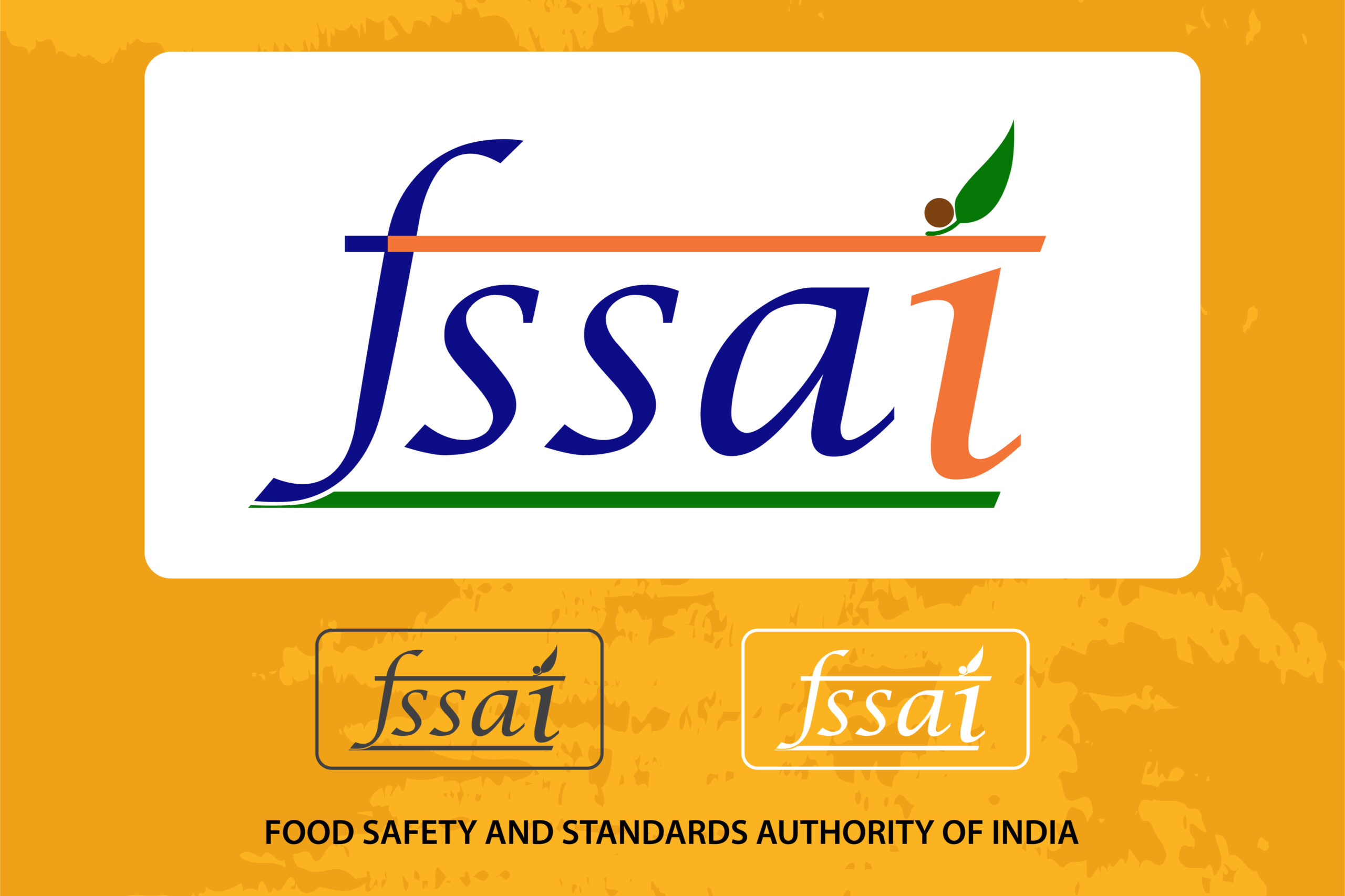In India, the FSSAI sets standards for food, so that there is no chaos in the minds of consumers, traders, manufacturers, and investors. This article explains the FSSAI standard regulations with which you should comply to avoid being penalised by the government.
Overview
Government agencies all around the globe have stringent policies in place for food labelling and food packaging designs. In India, the FSSAI (Food Safety and Standards Authority of India) is the authority that mandates the food labelling norms. Whenever there is a launch of a new food product or the packaging gets renewed, the producer needs to adhere to FSSAI guidelines on the labelling of food products.
With so many FSSAI label rules in place, there is every chance for errors creeping in. Any inadvertent mistake in complying with FSSAI food labelling rules may lead to fines, penalties, product recalls, or delays in a scheduled product launch. However, with proper knowledge of the FSSAI labelling rules, you can steer your product clear of all these situations.
What Are the FSSAI Food Labelling Regulations?
The FSSAI guidelines on the labelling of food products are a comprehensive set of rules that every food manufacturer and brand must follow. These rules mandate the labelling of every packaged food item and provide certain crucial information related to the product and the manufacturer. These are as follows:
1. Name of the Food
A label should clearly display the product’s name and the font prescribed in the food labelling FSSAI rules.
2. The List of Ingredients
The label must mention the elements used in making the final food product. The manufacturer should mention all the ingredients of the product fairly and should not keep the end customers in the dark about any ingredients used.
3. Nutritional Information
FSSAI labelling rules mandate the mention of the details related to the calories of the food product on the label. It should mention calories received from trans fat, saturated fat, sodium, cholesterol dietary fibre, carbohydrates, protein, sugar, iron, calcium, vitamin A, and vitamin C contained in the product.
4. Declaration Regarding Non-vegetarian or Vegetarian
Some parts of India consider non-vegetarian food unholy and against the relevant religious practices. Therefore, FSSAI label rules dictate to every manufacturer to mention on the label whether the food product has any non-vegetarian ingredients in it. The label must have a small dot at the corner to represent if the product is vegetarian or non-vegetarian. A red-coloured dot represents non-vegetarian food and a green-coloured dot represents vegetarian food.
5. Declaration Regarding Food Additives Used
Additives are substances added to a food product to enhance its appearance and/or taste and to preserve its flavour. The producer must make a declaration on the label regarding the additives used in the product.
6. Name and Complete Address of the Manufacturer
At a prominent place on the label, there should be a clear mention of the manufacturer’s name, complete address, and place of manufacturing.
7. Customer Care Details
The contact details of the customer support centre must be on the label
8. Quantity
The net quantity or packaged weight of the food product must find a prominent mention on the label
9. Retail Sale Price
The maximum retail price at which the product is on sale should be there.
10. FSSAI Logo and License Number
At a prominent place on the label, there must be a mention of the logo and the food licence online number, as per the FSSAI labelling rules
11. Batch/Code/Lot Number
These numbers provide authenticity about the manufacturer of the product and hence there should be a mention of it on the label.
12. Manufacturing Date and the Best Before/Use-by Date
This is an important piece of information for consumers. It will inform them of the date before which the product has to be consumed. Any consumption after the expiry date may cause harm to the consumer.
13. User Instructions
The FSSAI labelling rules mandate the producer must mention the instructions to use the product on its label.
14. Country of Origin (For Imported Food)
According to the FSSAI label rules, on the labels of all imported foods, there must be a mention of the nationality of the food. This will inform the consumers where the product was grown, manufactured, or processed.
15. FSSAI License Number
The label of the product must display the FSSAI logo and license number, in contrast, the colour of the packaging background for a clear view.
FSSAI Labelling Guidelines for Wholesale Packages
Ensure compliance with FSSAI Labelling Guidelines for Wholesale Packages with the following details on the product label:
- Product name
- Ingredients list (not needed for single-ingredient)
- Manufacturer’s name and full address
- Manufacturing date
- Best before/use-by/expiry date
- Vegetarian or non-vegetarian logo
- Importer’s name and address
- FSSAI importer license number and logo
FSSAI Labelling Guidelines for Primary Foods in Packages
Adhere to FSSAI Labelling Guidelines for Primary Foods in Packages with the following details on the product label:
- Food name
- Packer’s name and full address
- Packing date
- Importer’s name and address
- Net weight
- Lot No./Code No./Batch No.
- Best before/use-by/expiry date
- FSSAI importer license number and logo
FSSAI Labelling Guidelines for Primary Foods Imported in Bulk
Follow FSSAI Labelling Guidelines for Primary Foods Imported in Bulk with these essential details on the product label:
- Food name
- Importer’s name and complete address
- Net weight
- Lot/Code/Batch Numbers
- Best before/use-by/expiry date
- Ensure non-detachable labelling on plastic/gunny bags or sacks.
Exemptions from Food Labelling Requirements
Explore exemptions from food labelling requirements according to the Food Safety Standard (Packaging and Labelling) Regulations:
- Packages with a surface area not exceeding 100 square centimetres may be exempt.
- For packages under 30 square centimetres, details like manufacturing date can be on wholesale boxes or multiple containers.
- Reusable liquid bottles are exempt from listing ingredients but must display nutritional information.
- Foods with a shelf life under seven days can skip the manufacturing date but must show the ‘Use by date.’
- Wholesale packages may omit details like ingredients, manufacturing date, best before/expiry date, irradiated food labelling, and the vegetarian/nonvegetarian logo.
Common Mistakes that Affect FSSAI Approval
Avoid these common mistakes that can impact FSSAI approval for your products:
Font Fumbles
Selecting an incorrect font type or size can lead to issues. Ensure essential details align with FSSAI-approved font dimensions to meet packaging guidelines.
Logo Lapses
Non-compliance with FSSAI-specified logo dimensions and colours may pose problems. Adhere to size and colour instructions for symbols like the non-vegetarian indicator.
Contrast Concerns
Packaging should balance aesthetics with readability. Ensure the FSSAI logo and license number contrast effectively with the background to enhance visibility.
Truth in Advertising
Strict regulations combat false claims. Avoid misleading labels; for instance, products high in sodium can’t be labelled as ‘healthy’ or ‘nutritious.’
Front-and-Center Nutrition
Nutritional information isn’t just for the fine print. FSSAI mandates key details on the front, including energy, total fat, trans fat, total sugar, and salt per serving, following specified formats.
Stay on the right side of FSSAI guidelines by verifying your design against regulations before printing. Incorporate artwork proofing into your packaging design process for a smoother approval journey.
The Takeaway
We have seen many companies often missing out on important aspects related to FSSAI food labelling regulations and languishing in the ‘disapproval’ section. Therefore, it is important for you to give due importance to the FSSAI guidelines on the labelling of food products. Ensure you double-check the labelling for compliance with the FSSAI food labelling before sending it off for the final printing. You should connect to Vakilsearch to get your product registered with the FSSAI and ensure your product complies with the FSSAI standards.
Frequently Asked Questions
What is mandatory food Labelling?
Mandatory food labelling entails providing essential information on food product packaging as mandated by regulatory authorities. This includes details like ingredients, nutritional content, allergens, expiration dates, and more. Adhering to these guidelines ensures transparency and helps consumers make informed choices about the products they consume.
What are the requirements for food labelling?
Food labelling requirements encompass a set of guidelines dictating what information must be displayed on food packaging. Key elements include the product name, list of ingredients, nutritional information, allergen disclosure, manufacturer details, expiry date, and more. Complying with these regulations ensures consumer safety and facilitates informed purchasing decisions.








